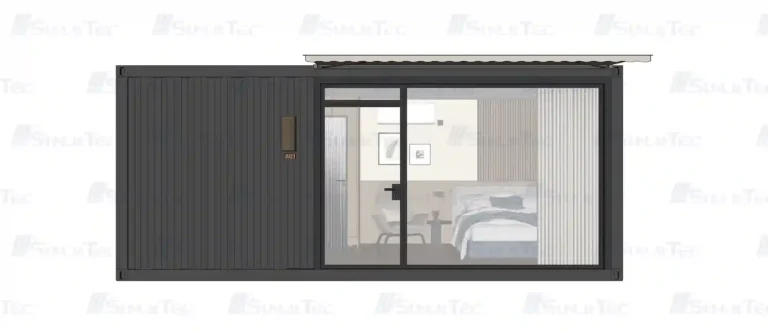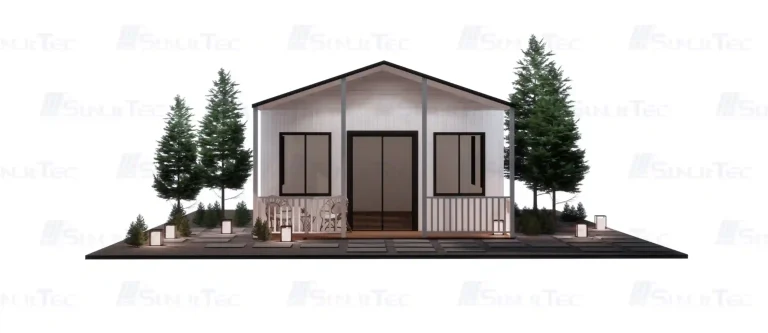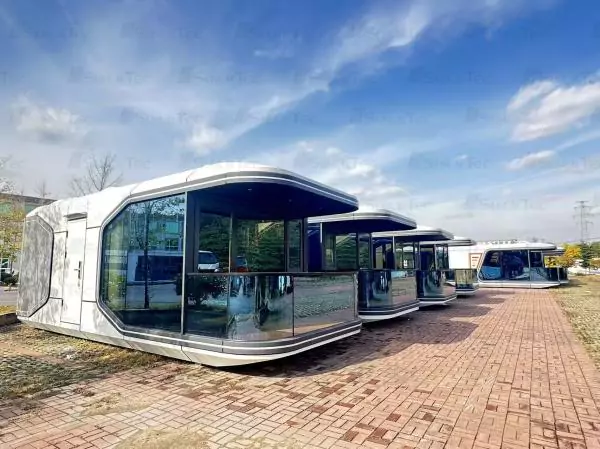1.Introduction
Canadá’ El problema de la vivienda se enfrenta actualmente a graves pruebas, y la situación actual ha preocupado a innumerables personas. La tendencia de los precios de la vivienda sólo ha aumentado, al igual que el alquiler, que ha seguido aumentando, lo que hace que muchas familias no puedan pagar la vivienda. Al mismo tiempo, el problema de la escasez de viviendas se ha vuelto cada vez más prominente y se ha convertido en un problema espinoso que necesita ser resuelto en Canadá. desarrollo social. Bajo tal situación, la vivienda prefabricada modular, como una solución altamente potencial, ha entrado gradualmente en la gente’ visión, trayendo nueva esperanza para aliviar la crisis de la vivienda. La exploración en profundidad del potencial de la vivienda prefabricada modular en el mercado canadiense de la vivienda es de gran importancia práctica para aliviar la actual crisis de la vivienda, mejorar las personas’ condiciones de vida, y promover la estabilidad social y el desarrollo.
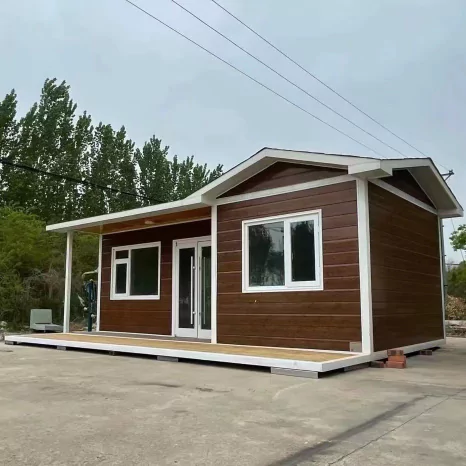
2.La situación actual de Canadá’ Crisis de vivienda
2.1 Presentación de datos sobre el aumento de los precios de la vivienda y los alquileres
En todo el país, Canadá’ El precio medio de la vivienda ha aumentado drásticamente. Tomando ciudades clave como Vancouver y Toronto como ejemplos, los precios de la vivienda se han disparado en los últimos años, y el aumento en algunas áreas incluso ha superado el 50%. Los precios de los alquileres también han estado aumentando, y muchos inquilinos han encontrado indefensos que sus gastos mensuales de alquiler representan una proporción creciente de sus ingresos familiares, y algunas familias incluso tienen que pagar más de la mitad de sus ingresos por alquiler. El fuerte aumento en la proporción de los gastos de vivienda a los ingresos de los hogares ha presionado gravemente a la familia’ capacidad de consumo en otras áreas, y ha tenido un gran impacto negativo en la calidad de vida de la gente.
3.Overview de la vivienda prefabricada modular
Existen dos formas principales de construir casas modulares, cada una con diferentes escenarios aplicables y ventajas e inconvenientes, como sigue:

El primero es el tipo de conjunto prefabricado general: todos los módulos de alojamiento tales como quillas de estructura de acero, techos de pared, placas de base y capas de aislamiento se producen en fábricas de acuerdo con estándares unificados. El montaje se completa en la fábrica mediante soldadura, pegado, etc., y el interior está finamente decorado. El circuito se coloca de acuerdo con los requisitos del cliente, y la interfaz de la tubería de agua está reservada. Después de que la casa es transportada al destino, solo necesita conectar el circuito y la tubería para mudarse. La ventaja de este método es que ahorra el proceso de instalación en el sitio, la velocidad de mudanza es rápida y es adecuada para compras individuales o personalización de lotes pequeños. Sin embargo, si se compra en grandes cantidades (excepto para casas envasadas) o casas de cápsulas compradas, el costo de envío será relativamente alto. Debido a que toda la casa es grande en tamaño y ocupa mucho espacio para el transporte, el gasto de carga será considerable.
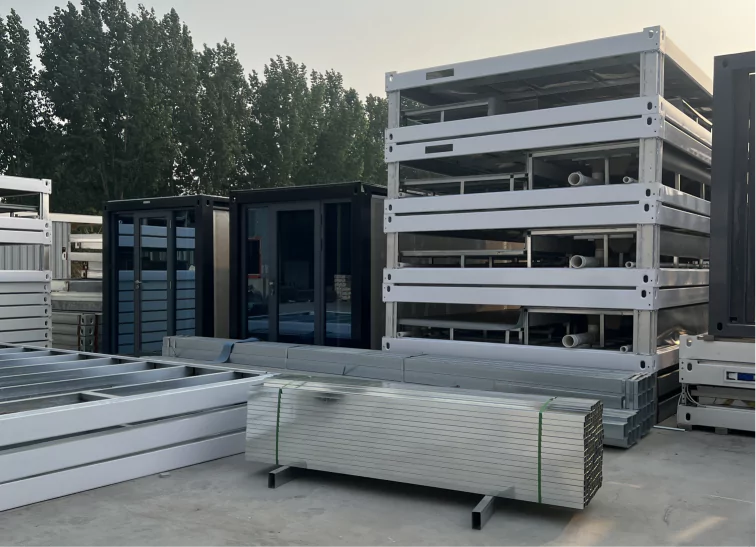
El segundo tipo es el tipo de montaje del transporte de piezas dispersas: todos los componentes de la casa también se producen en la fábrica, pero se envían al cliente’ dirección designada en forma de partes dispersas modulares. Los clientes pueden elegir organizar su propio personal para la instalación, o contratar trabajadores de fábrica al sitio para la construcción, pero los gastos adicionales como los viajes y la mano de obra en que incurra la contratación de trabajadores son soportados por el cliente. La ventaja de este método es que un contenedor de envío puede cargar múltiples conjuntos de piezas de casa, lo que reduce en gran medida el costo de envío. Sin embargo, debe ser montado en el sitio, y el costo de mano de obra aumentará. Por lo tanto, este método de construcción es más recomendable para los clientes que realizan campamentos, proyectos culturales y turísticos, o planean comprar en grandes cantidades y tienen sus propios equipos de construcción.
4.Advantages de casas prefabricadas modulares
4.1 Ventaja de eficiencia de la construcción
La mayor parte de la construcción de casas prefabricadas modulares se completa en la fábrica, y el entorno de construcción en la fábrica es relativamente estable y no se ve afectado por factores naturales como el clima. En comparación con la construcción residencial tradicional, el período de construcción de casas prefabricadas modulares se acorta considerablemente. Por ejemplo, una casa tradicional puede tardar un año o incluso más en construir, pero con la tecnología de prefabricación modular, una casa del mismo tamaño puede tardar solo unos meses en ser entregada, mejorando en gran medida la velocidad de suministro de viviendas.
4.2 Ventaja de coste
La fábrica’ El modelo de producción a gran escala ofrece a las casas prefabricadas modulares una ventaja significativa en el control de costos. Al comprar materias primas a gran escala, se pueden obtener precios más favorables, reduciendo así los costos de materiales. Además, dado que la mayor parte de la construcción se completa en la fábrica, se reducen el costo de mano de obra, el costo de gestión y el costo adicional causado por los retrasos en la construcción en el sitio de construcción. Los estudios han demostrado que las casas prefabricadas modulares pueden reducir los costos en un 10% – 20% en comparación con las casas tradicionales.
4.3 Ventajas ambientales y de calidad
El proceso de producción estandarizado y el estricto sistema de control de calidad en la fábrica garantizan la calidad de las casas prefabricadas modulares. Cada módulo debe someterse a múltiples procesos de inspección de calidad durante el proceso de producción para garantizar la consistencia y la estabilidad del producto. En comparación con los métodos de construcción tradicionales, las casas prefabricadas modulares generan significativamente menos residuos de construcción durante el proceso de construcción, y la contaminación al medio ambiente también se reduce significativamente. Al mismo tiempo, debido a la alta eficiencia de la producción en fábricas, el consumo de energía es relativamente bajo, lo que está más en línea con el concepto de desarrollo sostenible.
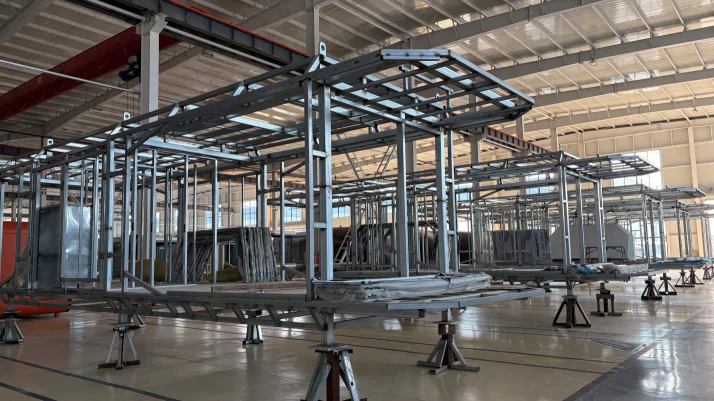
5. Apoyo a la política del Gobierno canadiense
5.1 Iniciativas del Gobierno Federal
Con el fin de promover el desarrollo de viviendas prefabricadas modulares, el gobierno federal canadiense ha introducido una serie de iniciativas poderosas. Entre ellos, el plan de otorgar enormes préstamos ha atraído mucha atención. El gobierno planea proporcionar a los fabricantes de viviendas prefabricadas modulares préstamos de hasta miles de millones de dólares canadienses para que las empresas expandan la escala de producción y mejoren la tecnología de producción. El gobierno también está comprometido a construir una nueva industria de la vivienda, confiando en el país’ ricos recursos de madera, tecnología avanzada y fuerza de trabajo suficiente para promover el vigoroso desarrollo de la industria de la vivienda prefabricada modular y mejorar la capacidad de suministro de vivienda.
5.2 Acciones del Gobierno Provincial
Ontario ha tomado medidas activas para promover el desarrollo de viviendas prefabricadas modulares e invertido mucho dinero en promover la construcción modular. Estos fondos se utilizan principalmente para apoyar la innovación en investigación y desarrollo de empresas relacionadas, construir proyectos de demostración y educar al público. Otras provincias han seguido el ejemplo e introducido políticas similares. Por ejemplo, la Columbia Británica ha alentado a las empresas a participar en la construcción de viviendas prefabricadas modulares mediante incentivos fiscales y otras políticas para contribuir a aliviar la crisis de la vivienda en la provincia.
6.Desafíos a los que se enfrenta la vivienda prefabricada modular
6.1 Percepción pública
Algunos miembros del público tienen malentendidos sobre la vivienda prefabricada modular, creyendo que su calidad es inferior a la de la vivienda tradicional y su apariencia no es lo suficientemente hermosa. La formación de este concepto se debe principalmente a la falta de comprensión de la tecnología de vivienda prefabricada modular. Debido a la relativamente baja popularidad de la vivienda prefabricada modular en Canadá, el público carece de experiencia intuitiva y comprensión, lo que resulta en una baja aceptación de ella. comprensión de la vivienda prefabricada modular. Los principales obstáculos son las limitaciones de los conceptos tradicionales y la falta de canales eficaces de publicidad y promoción.
6.2 Normas reglamentarias
La mayoría de las normas y normas de construcción existentes se basan en métodos de construcción tradicionales. Hay muchos aspectos inadaptables para el emergente modelo de construcción de viviendas prefabricadas modulares. Por ejemplo, en términos de normas de seguridad de estructuras de edificios y especificaciones de protección contra incendios, deben formularse nuevas especificaciones específicamente aplicables a viviendas prefabricadas modulares. Sin embargo, la formulación de nuevas especificaciones y normas se enfrenta a muchas dificultades y complejidades. Es necesario tener en cuenta muchos factores como el proceso de construcción especial, las características estructurales y los requisitos de control de calidad de la vivienda prefabricada modular. Este proceso requiere mucho tiempo y esfuerzo.
6.3 Falta de talentos profesionales
La tecnología de construcción de viviendas prefabricadas modulares es diferente de la tecnología de construcción de edificios tradicionales, que plantea requisitos especiales para las habilidades de los trabajadores. Los trabajadores necesitan dominar las habilidades operacionales de la producción de módulos en la fábrica y las habilidades profesionales del montaje de módulos en el sitio de construcción. En la actualidad, Canadá’ El sistema de formación de talentos profesionales en el campo de la vivienda prefabricada modular sigue siendo imperfecto, careciendo de cursos de formación sistemáticos y bases de enseñanza prácticas, lo que resulta en una escasez de talentos profesionales y restringe el rápido desarrollo de la industria de la vivienda prefabricada modular.
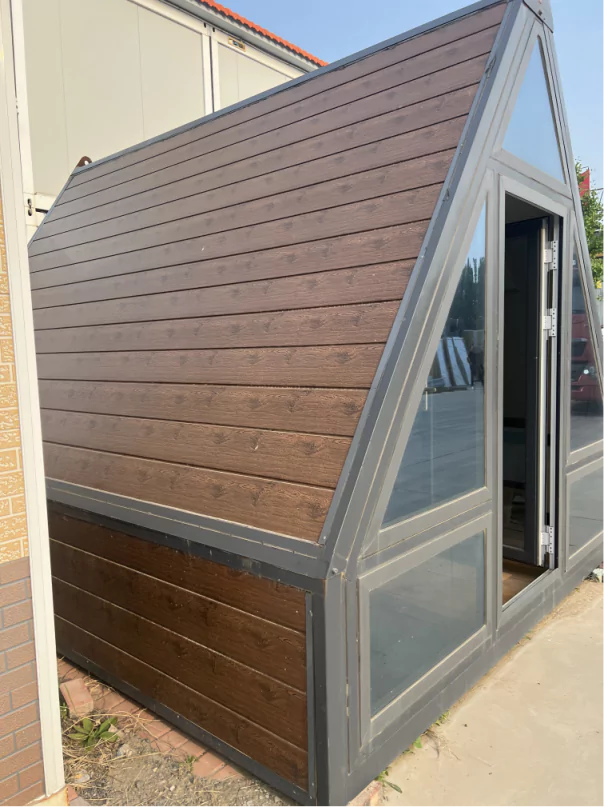
7. Diversidad de soluciones a Canadá’ Crisis de vivienda
7.1 Medidas para aumentar el suministro de tierras
El gobierno ha ajustado activamente su política de tierras e incrementado el suministro de tierras para la construcción residencial. Mediante la planificación racional del desarrollo urbano, el desarrollo de nuevos recursos de tierra y el aumento de la superficie de tierra disponible para la construcción residencial. El Gobierno también está comprometido a mejorar la eficiencia del uso de la tierra y alentar la construcción de viviendas de alta densidad, como apartamentos de alto nivel, para hacer pleno uso de los recursos terrestres limitados y aumentar la oferta de viviendas.
7.2 Fomentar el modelo de desarrollo de usos mixtos
El modelo de desarrollo de uso mixto se refiere a la combinación orgánica de múltiples funciones como residencial, comercial y de oficina en la misma área. Este modelo ha tenido éxito en algunas ciudades, como algunas comunidades en Montreal. A través del desarrollo de uso mixto, los residentes pueden disfrutar de los servicios comerciales, de oficina y otros servicios de apoyo circundantes mientras viven, reduciendo el tiempo de desplazamiento y los costos. Este modelo también puede promover el desarrollo económico en la región, aumentar las oportunidades de empleo y desempeñar un papel positivo en el alivio de la crisis de la vivienda.
7.3 Medios para apoyar el desarrollo del mercado de alquiler
El gobierno implementa políticas de control de alquileres para limitar razonablemente el aumento de los alquileres y proteger los derechos e intereses legales de los inquilinos. El gobierno aumenta la inversión para aumentar la oferta de viviendas de alquiler. Al construir viviendas públicas de alquiler y alentar a las empresas a participar en la construcción de viviendas de alquiler, la proporción de viviendas de alquiler en el mercado aumentará, proporcionando a más personas opciones de viviendas de alquiler asequibles.
8.Conclusión
Carcasa prefabricada modular desempeña un papel vital en Canadá’ crisis de vivienda. Sus numerosas ventajas como la alta eficiencia de la construcción, el bajo costo, la alta calidad y la protección del medio ambiente lo convierten en un arma poderosa para aliviar la crisis de la vivienda. Sin embargo, para aprovechar plenamente el potencial de la vivienda prefabricada modular, es necesario superar una serie de desafíos como la insuficiente concienciación pública, las regulaciones y normas imperfectas y la escasez de talentos profesionales. Esto requiere que el gobierno, las empresas y todos los sectores de la sociedad trabajen juntos para promover el desarrollo de la industria de la vivienda prefabricada modular. A través de los esfuerzos de todas las partes, creo que Canadá puede aliviar gradualmente la crisis de la vivienda, proporcionar una vivienda más asequible y de alta calidad para la gente, promover el desarrollo saludable y estable del mercado de la vivienda y permitir a más personas realizar sus sueños de vivir y trabajar en paz y satisfacción.

